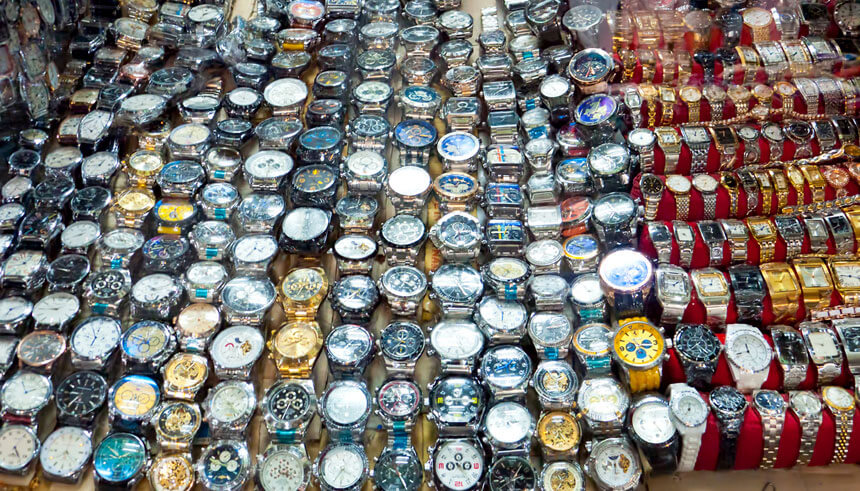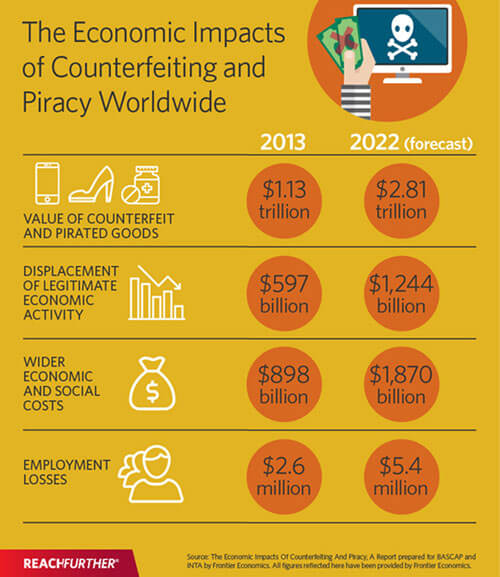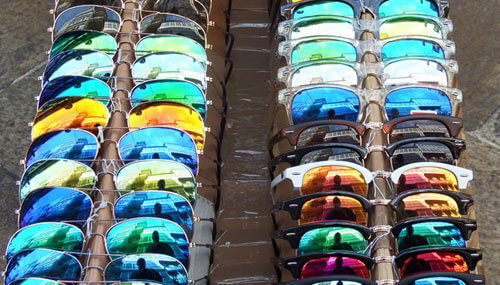US-Asia Business
Fighting Back Against Online Counterfeiters
By Daisy Lin

How entrepreneurs can protect their products from the global counterfeiting racket infiltrating social media.
Counterfeiting is a huge business that is growing exponentially as e-commerce, social media, and bots become more sophisticated. The Organisation for Economic Co-operation and Development estimates that trade in counterfeit and pirated goods amounted to $461 billion in 2013, a staggering figure that is only getting worse. In fact, the total value of counterfeit and pirated goods is predicted to reach $2.81 trillion in 2022—that’s more than the gross domestic product of France or Brazil. And much of the sales are going into the pockets of criminal organizations.
It’s no longer just the big brands that are being targeted; smaller businesses are falling victim as well, according to Bharat Dube, CEO of Strategic IP Information, an intellectual property rights (IP) security firm based in Singapore. He helps established and startup businesses to protect themselves.
“It’s the perfect storm,” Dube says. “The rise of the internet and the lack of regulations has enabled the counterfeiters to hide their activities and accumulate scale like never before.”
While brands are pressuring top e-commerce sites such as Taobao and Amazon to crack down on counterfeit goods, they have not focused their attention adequately on social media, according to Harley Lewin, partner at the law firm McCarter & English, who has represented brands such as New Balance, Reebok and numerous other companies in multi-million dollar intellectual property cases.
On Instagram, a counterfeiter can use bots to put up 5,000 auctions with different Instagram names for the same item, Lewin says. “When you can do that, it makes it that much easier to offer the smaller business product.”

Protect your company from day one
Lewin recommends that a budget for IP protection be built into the business plan for every startup from the very beginning. “In today’s world, if you don’t have an IP protocol, you’ve got nothing. It’s not a matter of if you’ll be counterfeited, it’s a matter of when,” Lewin says.
Dube advises businesses to protect themselves as widely as possible right from the outset to avoid downstream problems: “The reach of the laws are territorial, whereas the reach of counterfeiters are global.”
Trademark registration worldwide
The first step is to register your rights. If you want to protect your brand, you not only need to register your product in the U.S., but you also should register your trademark and other IPs in China as soon as possible. And not just the English name of your product; you need to register the Chinese name of your product in China, as well. Even if you only plan to manufacture and not sell your product in China, don’t even think about it until you have gotten your Chinese trademark. China is a “first-to-file” country, which means that the person who registers the trademark for that product will also have all exclusive rights to sell the product. Dube has seen instances where businesses think they are covered under trademarks, only to have someone register their products in Chinese, rendering them unable to sell their own product in China.
Since trademark protection in China is defined by classes and subclasses, attorney Dan Harris of Harris Bricken suggests some companies cover themselves by registering marks in more classes and cover other related products and services that may be at risk. For example, Starbucks registered their trademark in all 45 classes of goods and services in China.
The registration process in China can typically take anywhere from 16-24 months. If you do find counterfeits of your product on Taobao and haven’t received your Chinese trademark yet, Alibaba now has an IP protection process and will take down infringing products based on a U.S. trademark on all their platforms, including Taobao.
Once you have your trademarks in both countries, businesses should then register that trademark with customs offices in China and the U.S., so that agents can seize the infringing goods.
In addition, companies should also register for the Madrid Protocol, which allows businesses that own a trademark in their home country to request additional registration in more than 60 member countries in Europe, Asia and Africa. You can go to the World Intellectual Property Organization website to register.

“In today’s world, if you don’t have an IP protocol, you’ve got nothing. It’s not a matter of if you’ll be counterfeited, it’s a matter of when.”
NDA and manufacturing agreements with factories
Once you have secured your trademark and are working with intermediaries to find a factory that can make your product, be sure they sign a non-disclosure agreement (NDA) that clearly defines how they make use of your IP.
When it comes to finding the right people with whom to do business with in China, it’s all about “due diligence, due diligence, due diligence,” Harris says. “First find the right people in your home country who know China and can help you find the right people in China.” No matter what, it is always important to conduct due diligence on any potential partner, he says.
When a factory has been identified that can make a prototype or a certain amount of your product, the intermediary must get the factory to sign an NDA before going forward, as difficult as it may be to find factory manufacturing time.
“You have to be tough. I can tell you from experience you absolutely have to document this,” Lewin says.
Once you have found the right factory to partner with in the long term, there is the manufacturer’s agreement, which is a comprehensive document that addresses every detail of production and sets up the parameters of behavior: What happens if the factory does an overrun, how they deal with seconds and defective products. “It confirms who owns what and what they do every step of the way, which leaves very little wiggle room when you catch them doing what they’re not supposed to do,” according to Lewin, who says that any good manufacturer would be willing to sign one of these without blinking twice. He recommends working with a lawyer who has extensive international experience who can draw up the contract in Chinese that is enforceable in China.
Effective policing
A trademark is just the beginning. From there, you have to monitor online on a regular basis to take down counterfeit goods. For smaller companies, having a dedicated person on your staff like a technology officer in charge of policing may be a good idea, Dube says—someone who is responsible for brand protection and enforcement of your rights. “It just establishes priorities, and it’s helpful for such a person to respond to inquiries and liaison with law enforcement officials around the world.”
Joining industry groups is also a good way to collaborate with other business owners and exchange best practices, contacts and information. In the U.S., there is the International AntiCounterfeiting Coalition Inc., (IACC), which hosts spring and fall conferences. In Asia, Dube founded the Asian Coalition Against Counterfeiting and Piracy. These organizations also work with the media to raise awareness of the problem of counterfeiting, and advocate for better internet governance. There are also groups geared towards specific industries, as well.
Track inventory
Track and trace solutions are another strategy. You can incorporate invisible markers, threads or chips in the product or on the packaging. It’s essential to know everything about your product—where it’s being shipped to, whether it has been diverted, so that you can better deal with the problem when it arises.
Some pharmaceutical and alcohol companies are using blockchain to verify the authenticity of their products. The technology is the same one that powers bitcoin; it creates a public digital ledger with secured time-stamped records of transactions that are encrypted to ensure virtual security. For example, the Ardnamurchan Distillery in Scotland prints scannable QR codes on its whisky labels, which verifies information about its supply chain. Consumers can find out details such as where the barley was grown, when it was produced—and, at the same time, it certifies the authenticity of the product.
Zero tolerance policy
Dube has followed the money trail to factories and distributors in China, Russia, Kazakhstan, Malaysia, and numerous other countries, and led local authorities to carry out raids, resulting in the seizure of counterfeit goods, bank accounts and luxury properties. “You’re trying to create a nuisance factor for counterfeiters that might make them turn their guns elsewhere and leave you alone,” he says.
Likewise, Lewin advises businesses to take a zero tolerance policy. “Everything that comes through the door, you deal with it, one way or another,” he says. “You’re delivering a message to your retailers, distributors, and salespeople that you’re going to back them up. Everyone needs to know that you’re doing the very best you can to keep the marketplace clean.”
Sign up for the Reach Further Newsletter
We’ll keep you in the know about the latest US-Asia business news and trends.
Suscríbase al boletín Reach Further
Lo mantendremos informado sobre las últimas noticias y tendencias comerciales entre Estados Unidos y China.

